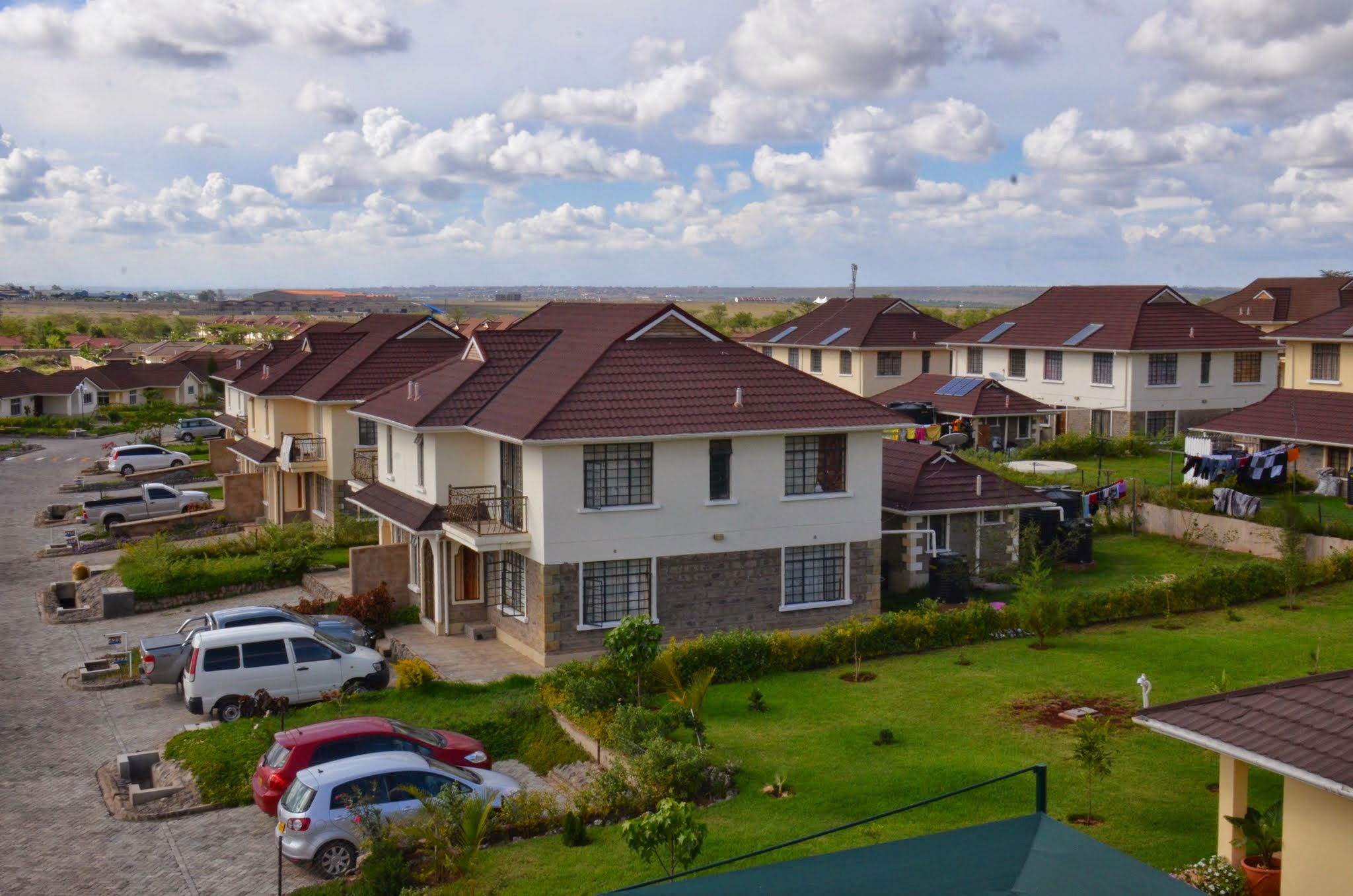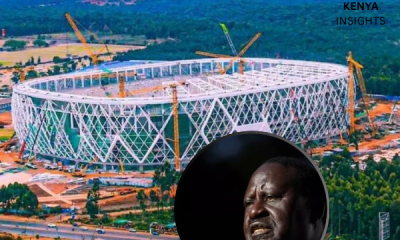Development
Bubble: There’s A Structural Problem With Kenya’s Real Estate Market

By Kosta Kioleoglou
Over the last decade, many Kenyans took their
lifetime savings and invested in the real estate market. Whether through chamas or saccos, this move was due to the attractive promise of a safe and secure opportunity, even guaranteed in some cases, that the property market had to offer.
Unfortunately, same as the Kenyan stock market which was promising the same and then collapsed, the real estate dream was hiding the same risks and dangers for those who irrationally jumped into this market, making investments without considering the risks, sustainability and capacity of the market.
Over the last three years, a feeling that something might be going wrong with the real estate investments is slowly growing, although a big majority continue to live in denial.
Every market analyst notes that economic headwinds in 2017 adversely impacted several sectors of the economy.
The country’s macroeconomic and microeconomic status was seriously affected negatively. The political instability which the country faced during the last elections triggered a sequence of negative events which existed before elections but were kept
carefully under the radar in an effort to manipulate the real market dynamics and economic performance of the country.
WARNING SIGNS
Long before the pre-election period, there were several signs that the Kenyan economy and its real estate sector were moving on sandy grounds.
The Kenyan shilling was under huge pressure and lost over 20 per cent of its value against all major currencies. It is important to note that the currency never managed to recover the majority of these losses.
The currency, seriously weaker, for the last three years in a ranging lower levels is affecting not only the country’s macroeconomic indexes but day to day life too of every resident.
Another important fact is that the country’s external debt has been growing with a geometric progression, same as the private debt.
So, is real estate market in Kenya sustainable or is it going to follow the example of the stock market- lose most of its value, causing the evaporation of
huge wealth which has been invested mainly by the poor and middle class of Kenya during the last decade?
First, I would like to clarify that a real estate boom was a natural development for a country like Kenya. As the size and dynamics of Kenya’s emerging economy were getting bigger, better and stronger, the need for more and better housing, improved infrastructure and the expansion of urban areas, especially in the capital city of Nairobi was a must.
The problem was that in the middle of this fast growing country’s prosperity and the dizziness of the temporary welfare, people forgot to use common sense and started operating irrationally.
Kenya and her citizens started to live and spend beyond their real means- buying expensive cars, luxury houses and focusing on a lifestyle which could not be sustained.
There is a saying, ‘rich people brst make the money, then they save money and only after that they start spending it. Poor people on the other hand brst spend and then think about making or saving the money.’
This is exactly what happened to the real estate market of Kenya. Thrilled by the huge need for housing in the country, majority of people rushed to invest heavily, directly or indirectly in the promising sector forgetting about the basics of real estate and general investment rule of risk-return factor and market analysis.
HOUSING DEMAND IS REAL
The housing debcit of over 200,000 houses a year is real. Same as the need for commercial space. There was, and actually there is still a huge demand for properties in this country.
The question is: what is the need, what type of properties and at what is the real average affordability in the country.
I wrote about this almost five years ago, stating that this market does not need luxury properties but affordable housing. Today, after almost three years of market stagnancy, everybody talks about affordable housing.
But we need to make this clear. Affordable housing is not going to change the fact that the current
property market, the one that attracted billions of dollars is going down.
People have to be prepared to face losses. The sooner investors realise this, the better for the market. If investors do not face the reality now and fail to make the required correction moves, then panic and a possible irrational sale-offs could push the market to a collapsing point.
A quick outlook of the sector’s performance is really disappointing. For the last 18 months, there was a general belief that the only reason the real estate market was slowing down was the election period and the wait and see attitude of buyers and investors.
Nine months since the ‘hand shake’, which odcially marked the end of the election period, reality is presenting a different version of the story despite the efforts of those who like to manipulate the market and try to cover the real face of Kenya’s property market.
UNSUSTAINABLE
It does not require for someone to be an expert analyst in order to understand that real estate market in Kenya cannot be sustainable at current levels of pricing.
The types of properties that developers and investors had preferred to invest over the last ten years were targeting the wrong group, representing only a small fraction of the current huge housing demand of the country.
The biggest part of the current demand includes Kenya’s middle and lower class with low affordability. Any expectations for a quick market recovery and the continuation of the boom period after the elections are now fading out.
Available reports show that the market is slowing down after a small rebound during the brst quarter of 2018, which was not as strong as initially expected.
There are chances that we are heading to a recession rather than further market growth or another real estate boom period.
This argument is based on the available market data and reports. According to the latest house price index report released in September 2018 from the Kenya Banker’s Association, there was a 1.76 per cent overall increase in house prices during the second quarter of 2018.
This represents a marginal decline from the previous quarter’s 2.08 per cent increase, reSecting a sense of price stabilisation and therefore non- sustenance of the surge seen in the brst quarter.
The recovery recorded in the quarter of 2018 came in the wake of strained market conditions after a series of lower rate in price growth for bve consecutive quarters from the fourth quarter of 2016.
DISMAL TREND
This dismal trend was attributed to various factors, including shrinking private sector credit growth and market anxiety as well as political instability that preceded the 2017 General Election.
The KBA-HPI indicates that the increase should be considered in the context of being a reprieve, because the rise could be associated with transactions from previous quarters that were put on hold due to market anxiety and lower lending risk appetite following the enactment of the Banking (Amendment) Act 2016.
A clear sign of the market’s slowdown is shown on the available reports regarding construction materials and the value of building plan approvals which are decreasing month after month.
Cement uptake in six months to June 30 fell 7.9 per cent, while data from the Kenya National Bureau of Statistics (KNBS) indicate cement consumption in the brst six months of the year stood at less than 2.75 million tons, down from 2.98 million in 2017.
Consumption hit a four-year low after rising to a peak of 3.1 million tons in 2016 at the height of construction of the brst phase of the standard gauge railway (SGR), Kenya’s single largest post- independence infrastructure project. Lower consumption has led to reduced production.
The same trend applies to almost each and every sector of material production and sales related to the construction and real estate industry. Production of galvanised iron sheets also went down by 6,500 tons to 111,562 metric tons, the data shows.
The volume of construction material imports such as iron, steel bars and rods declined by 4.9 per cent during the brst quarter of 2018.
This decrease was an obvious result connected with the decrease of the total number and size of new buildings that are coming up as well as with the slower pace that developers are executing the existing projects which are under construction.
It is notable that the value of building plans approved in Nairobi County decreased to Sh60.11 billion in the brst quarter of 2018 compared to Sh61.72 billion in the brst quarter of 2017. Lower imports, production and consumption of building materials, as well as less building plans, clearly indicate that the construction sector is slowing down, while the current oversupply in the market and low transactions have made developers hesitate to commence new-builds.
The problem is not only in the residential market. Commercial property sector is also under huge pressure.
Recently, a management company decided to offer six months free of charge and next six months with 50 per cent discount on the rent in order to attract tenants for a mall they manage, as it has been empty since it opened its doors a few years ago.
Despite the fact that they have been negotiating and accepting lower rents since the beginning of 2016, commercial properties owners have to face the cruel reality of an oversupplied market, only left to watch their investments and properties remain vacant and lose in value day after day.
AFFORDABLE HOUSING
At last the latest trend in the market is the affordable housing. Under the current plans, the government intends to build houses of one, two and three bedrooms which will be sold at Ks 600,000, one million and three million shillings respectively.
Using common sense, we all understand that this is not going to support in any way the current real estate market. Low cost housing project does not make economic sense to investors as there is limited margin for probts via this model of development which globally has been used mainly as public or PPP projects.
In order to successfully implement a low cost/affordable housing concept, the government has to bnd the budget required for the implementation and construction.
To bnance the project, Treasury imposed a new tax where employers will contribute 1.5 per cent of monthly basic salary from each employee and remit it to National Housing Development Fund on or before ninth day of the preceding month.
Employees will equally contribute another 1.5 per cent subject to maximum contribution capped at Ks 5,000 from January next year.
To make a long story short, there is a structural problem with Kenya’s real estate market.
During the last ten years which included a period of amazing property value growth, the market was operating in the vacuum. Only the few who realised what was happening and the market’s absurdity, among which are the banks, kept a neutral safe attitude.
The fact that Kenya’s real estate was heading towards a bubble with high volatility was conbrmed by the fact that not even one big international real estate development company entered the market with the majority of them not even showing any interest to invest.
The large majority of investors and capital that was invested in the sector included money of disputed origin, money from Kenya’s diaspora and money from Kenya’s medium to low income class who invested their lifetime savings in a market which they did not know or understand, risking their hard earned money in a fully manipulated market.
There was a fundamental issue with this market. Too many investors, but very few qualibed users for the market supply.
A big misunderstanding of what exactly is Kenya’s middle class and the market’s affordability. These are the key factors which mislead the sector in an unsustainable growth.
After the stock market bubble, the real estate bubble is now creating huge losses affecting the general economic stability of the country.
Kenyans’ obsession for risky investments, the general belief that you cannot go wrong with land and property and the inability to understand investment risk may become the guillotine that will
*
BIG MISUNDERSTANDING
cut the head of her promising economy.
The country needs to invest in the real economy, the primary production sector, and manufacturing, blue economy, create jobs and build a solid future.
There is more proof to show that the market is heading towards a big recession. The last Kenya’s Homes Expo was more than a sign that the market is suffering.
Smaller than ever with few participants and even lessor visitors, the once shining hallmark property event has lost its glamour, not because of the organisers, but because of the market dynamics.
Understanding the real situation of the market on time and act before it is too late is a good advice for those who are still involved in the property market.
It is obvious that the property market operates in cycles. There was a long period of unreasonable and unsustainable growth which will be followed by a longer period of recession.
Price adjustments, portfolio and bnance restructure are going to be the upcoming trends in order to control and minimise losses and survive during the period of recession.
It is important to stay up to date, follow up with the market developments as well as the local and international trends. Remember always that what makes you money is the risk-return trade off.
That means higher risk is associated with greater probability of higher return and lower risk with a greater probability of smaller return.
This trade off which every investor faces between risk and return while considering investment decisions will determine your portfolios’ success.
***
The writer is the director of Avakon Ltd.
Kenya Insights allows guest blogging, if you want to be published on Kenya’s most authoritative and accurate blog, have an expose, news TIPS, story angles, human interest stories, drop us an email on [email protected] or via Telegram
-

 Business1 week ago
Business1 week ago‘They’re Criminals,’ Popular Radio Presenter Rapcha The Sayantist Accuses Electric Bike Firm Spiro of Fraudulent Practices
-

 News2 weeks ago
News2 weeks agoTemporary Reprieve As Mohamed Jaffer Wins Mombasa Land Compensation Despite Losing LPG Monopoly and Bitter Fallout With Johos
-

 Business4 days ago
Business4 days agoManager Flees Safaricom-Linked Sacco As Fears Of Investors Losing Savings Becomes Imminent
-

 Business5 days ago
Business5 days agoIt’s a Carbon Trading Firm: What Kenyans Need to Know About Spiro’s Business Model Amid Damning Allegations of Predatory Lending
-

 Investigations2 weeks ago
Investigations2 weeks agoFrom Daily Bribes to Billions Frozen: The Jambopay Empire Crumbles as CEO Danson Muchemi’s Scandal-Plagued Past Catches Up
-

 Investigations1 week ago
Investigations1 week agoDisgraced Kuscco Boss Arnold Munene Moves To Gag Media After Expose Linking Him To Alleged Sh1.7 Billion Fraud
-

 Sports2 weeks ago
Sports2 weeks ago1Win Games 2025: Ultimate Overview of Popular Casino, Sports & Live Games
-

 Business2 weeks ago
Business2 weeks agoHass Petroleum Empire Faces Collapse as Court Greenlights KSh 1.2 Billion Property Auction











